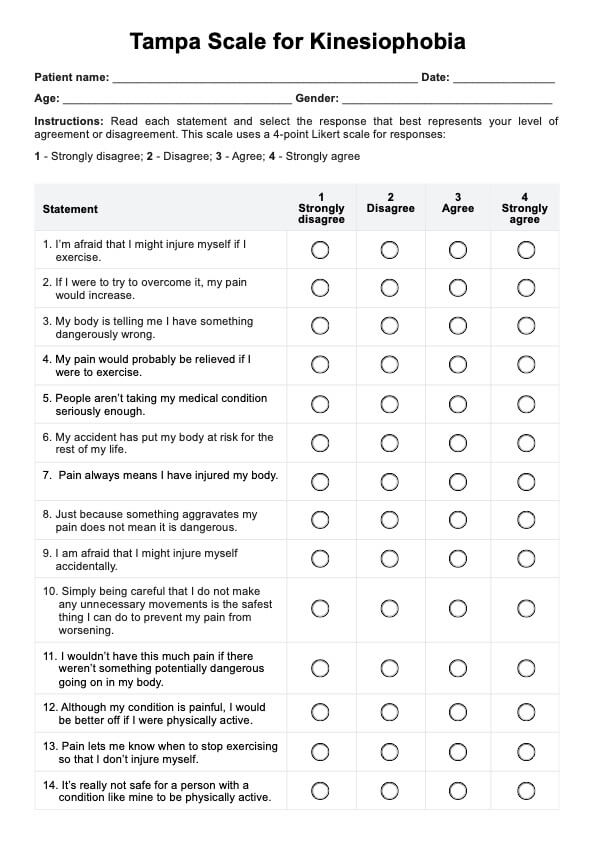Kinesiophobia is the excessive, irrational, and debilitating fear of physical movement and activity, primarily due to a fear of pain or re-injury. It often affects individuals with chronic pain or those recovering from an injury.

Tampa Scale of Kinesiophobia
Explore the concept of the Tampa Scale of Kinesiophobia, its origins, and purpose. Discover how it is used and get a free PDF download here.
Use Template
Tampa Scale of Kinesiophobia Template
Commonly asked questions
Kinesiophobia is typically assessed using standardized tools such as the Tampa Scale for Kinesiophobia (TSK). Physical performance tests can also be used to evaluate movement fear and avoidance behaviors.
The Tampa Scale for Kinesiophobia (TSK) is scored on a scale of 17-68, with higher scores indicating a higher level of kinesiophobia.
EHR and practice management software
Get started for free
*No credit card required
Free
$0/usd
Unlimited clients
Telehealth
1GB of storage
Client portal text
Automated billing and online payments











